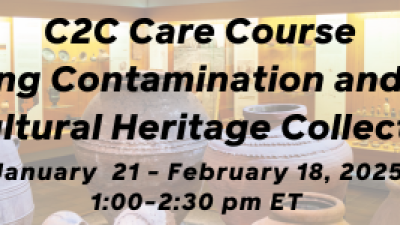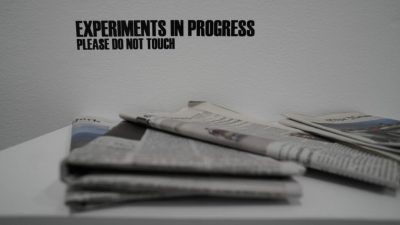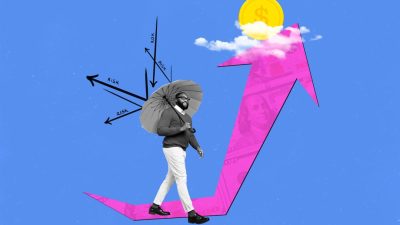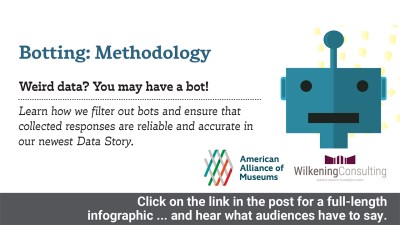
This article originally appeared in the January/February 2010 edition of Museum magazine.
A November 2008 headline in The New York Times read as follows: “Ludacris as Curator of His Own Hip-Hop Museum.”
The concert review described how the musician Ludacris featured guest rappers and DJs famous in the ’80s and ’90s in his own new recordings and live performances. Praising the inclusion of songs and appearances by other artists in the concert, the reviewer wrote, “A cavalcade of guests emerge to take the stage for a few moments each, a showcase of New York hip-hop history with a devoted fan as curator. It turned this show on its ear.”
Over the past few years, the words “curate” and “curator” have become increasingly prevalent in describing activities outside the museum arena. In addition to the word’s use as a synonym for “select” and “present,” as in the Ludacris review, “curate” is also being used in job titles and in related products and functions. Consider the following examples:
- the “community curator,” a new job spawned by Web 2.0 technology describing the function of organizing online communities
- radio producer Jay Allison listed in the credits of the National Public Radio series “This I Believe” as host and curator
- “Curator,” a software program that organizes artwork and album covers for iTunes collections
- “curated consumption,” trendwatching.com’s term for the informed selection of merchandise within a catalogue or store by such “experts” as lifestyle gurus or TV personalities
- TED Curator, job title of Chris Anderson, organizer of the Technology, Entertainment, Design conference that invites innovators to “give the talk of their lives” in 18 minutes
A subsequent Times article, “On the Tip of Creative Tongues” (Oct. 4, 2009), addressed this very topic. The author noted that “among designers, disc jockeys, club promoters, bloggers and thrift-store owners, ‘curate’ is code for ‘I have a discerning eye and great taste. Or more to the point, ‘I belong.”‘
Like all words, “curate” possesses an etymology that reflects changes in history and civilization. Over time, “curate” and its variations have been used to describe Ancient Roman bureaucrats responsible for aqueducts and corn and oil purchasing, medieval clerical caretakers of human souls, and more recently, guardians of such collections as at museums and libraries.
Regarding the word’s historical and current definitions, Alison de Lima Greene, curator of contemporary art and special projects at the Museum of Fine Arts, Houston, says, “Of course many of us have a natural inclination to protect the term ‘curator’—and certain uses of the word can degrade the years of training we have undergone (both in graduate school and in apprentice positions in the museum and academic worlds). We also like to think we are more than bellwethers pointing the way to new trends.
“However,” Greene continues, “most words in the English language are fairly mutable—and our current use of the word ‘curator’ hasn’t really been around all that long (compared to some good old Anglo-Saxon expletives). Indeed, flipping through the Oxford English Dictionary reveals that 15th-century usage defined curator as ‘one appointed as a guardian of the affairs of a person legally unfit to conduct them himself, as a minor, lunatic, etc.'”
Independent curator Michelle Kasprzak, who is based in Scotland, has addressed this topic over the past few years in her blog on her website Curating.info, with posts titled “… and Now I’m Off to Curate my Coffee Table” and “For What and for Whom.” When asked recently about the trend, she responded, “The growing use of the term ‘curator’ in other fields, while misleading to many, fools no one who is actually in the industry and knows about the scope of activities that a curator undertakes. The use and abuse of the term outside the field indicates how opaque the contemporary art world and its processes may be to the rest of society, but perhaps we should welcome this as a teaching moment, where what curators do can be discussed and illuminated in a broader context.”
Kristen Hileman, curator of contemporary art and department head of the Baltimore Museum of Art, says that while she wasn’t overly aware of the definition creep of “curate,” she’s fine with one field borrowing terminology from another: “In fact, it is intriguing to think there is something so evocative in the vocabulary describing my job that others want to use it to articulate their own abilities or services. One of the legacies of 20th-century art has been a thorough appropriation of the every day, so how could one object to the non-art world stealing something in return?”
The word “curate” could be attractive because of its implied prestige, suggesting that objects, experiences or people are being chosen and presented by an expert best equipped with the necessary knowledge and experience. Hileman says, “In short, I can see the appeal of a knowledgeable specialist making selections or recommendations in an information and image-saturated culture.” She adds, “I would also speculate that, in time, the use or overuse of the term might rob it of some of its preciousness, which isn’t necessarily a bad thing, since contemporary curators bring other skills to the table beyond connoisseurship.”
Still, some curators are highly sensitive to the dilution of the word “curate,” and their concerns may be justified. The expanded usage adds yet another chapter to the ongoing saga of challenges and changes within the curatorial profession over the past four decades. With exponential growth in informal education in the 1980s, the explosion of marketing and public relations in the 1990s, and now the influx of Web 2.0 technology and theory shaping how museums perceive and enact their core missions, the traditional function of museum curators has been questioned, criticized and sometimes reassigned so their positions can better align with an institution’s strategic focus. These changes were often necessary, but this over-generalization of curators’ status can explain why they respond negatively when “curate” describes non-museum activities.
In her 2001 Museum News article, “Reports of Our Death Have Been Greatly Exaggerated: Reconsidering the Curator,” Nancy Villa Bryk describes her experience of organizational change and job realignment as a curator at the Henry Ford Museum. She details how curators were asked to share their traditional responsibilities with others on staff, especially educators and experience designers. Now director of education and public programs at the Ann Arbor Hands-On Museum, Bryk says that for many curators, “our first reaction is to bristle at the use of the word ‘curate’ so broadly and seemingly indiscriminately. I went into this profession assuming my object expertise, my careful curation of a collection and an exhibition to support themes, and my ability to translate the object’s cultural importance to our visitors was all I needed to make me an effective curator. Yes, 20 years ago, not now. It’s so much more now.” Along those lines, Bryk says, “accepting the use of the term ‘curator’ in a variety of contexts may encourage us to share our expertise more broadly—it shakes us up a little and reminds us that we don’t have a lock on that term.”
Perhaps the broadest application of shared responsibilities is the advent of user-generated content and user participation in museum activities traditionally performed by curators, such as choosing objects for display and providing related information and interpretation. Examples run the gamut from somewhat passive—such as the Library of Congress posting its photography collection on Flickr and allowing viewer commentary—to more active, like a Tech Museum of Innovation exhibition with topics and displays designed by users of the Second Life virtual world website and then built at the Silicon Valley-area museum. These new approaches to visitor and user interaction have been the subject of countless conferences, articles, and workshops, along with discussion of their effects on an institution’s curatorial voice.
Troy M. Livingston, vice president for innovation and learning at the Museum of Life and Science in Durham, N.C., targets the crux of the issue: “I think the threat to curators is that if we allow anyone to participate, will that lessen the value of what curators contribute? There’s a sense of resistance and fear perhaps in the curatorial profession because of this. I mean, some curators probably hate Wikipedia because there’s no oversight. But we’re living in a Wikipedia world.”
With social media such as MySpace, Facebook, Flickr and YouTube, truly everyone can be viewed as an expert. Jim Richardson, founder of Sumo, a British consulting firm for arts and cultural organizations, has suggested that the “C” in Generation C should stand for not only content, creativity and connectivity, but curate—designating the millions of young people who create, organize, interpret and share pictures, music, video, and opinions on these websites. He reasons, “They curate ‘stuff,’ which says something about them, or, probably more realistically, says something about how they would like to be seen. I don’t think the term ‘curator’ means a great deal to these young people, but I think the act of curating does mean something. It helps them to say to the world who they are.”
Richardson adds that while Web 2.0 culture allows everyone to curate content, it complements rather than replaces the role of the professional curator: “I think this is a fresh and exciting way for people to interact with museum content and in doing this they are also exposing more people—their friends, peers—to that content. At present, there is a trend towards looking to the public to impact the content of exhibitions, but realistically the amount of work that it takes to develop an exhibition really requires professional involvement.”
The Museum of Life and Science’s Livingston summarizes, “The real difference between this idea of Curating 2 .0 and traditional curating is scholarship. That kind of expertise to study objects and put together an exhibition for cultural and education purposes is very different than the kind of curating going on in Web 2.0.” In terms of this dichotomy within museums, he says, “At one end of the spectrum you have collaboration and participation with visitors and audience, and at the other end you have a very scholarly level of expertise and extensive experience. But I think the world is a better place because both of these things are going on. You can then stretch an institution to go in both directions.”
Livingston relates this new “crisis of the curator” to those professional journalists whose jobs are threatened or even eliminated by declining publishing revenue and perceived increasing irrelevance. “There’s this debate between traditional journalism, such as newspapers, magazines, and standard media websites, and participatory journalism, like bloggers, independent websites, reader contributions to professional media outlets and Twitter,” he says. “The main difference in the two types is the editor or lack thereof.”
Although Web 2.0 has democratized the activity of curation, it has also engendered the need for knowledge experts to parse out the best and most relevant online content for various needs. “Enter the digital curator,” says Steve Rubel, director of insights for Edelman Digital and author of the blog “Micro Persuasion.” Rubel has stated that digital curators are the future of online content, and like traditional curators, “they are people who can separate art from junk and package [it] in creative ways. Historically, this has been in a museum context, but today it’s broader.”
When asked why the word “curate” appeals to the marketing and online industries, in particular, Rubel says, “It’s visual, and marketers are already dealing with content from disparate sources. Right away, everyone can understand how a company that embraces curation online can and should act—and fill a void.”
Rubel likens the job of curator to positions in entertainment, sports, and media. Television producer Mark Burnett, for example, “is a curator in the way he packages and launches reality shows,” Rubel says. Similarly, Oakland A’s General Manager Billy Beane “showed that you can curate baseball players by looking at them in a different way.” Beane was one of the first managers to use sabermetrics (the application of certain baseball statistics and other objective evidence) to predict the success of his current and prospective players. Faced with a relatively small salary budget compared to other teams, Beane assembled a roster by signing and cultivating previously undervalued players. This approach is not unlike curators who are often challenged to create engaging and educational exhibitions with ever-shrinking funds. Innovative approaches to scholarship, interpretation, and organization can help a curator examine a collection anew, and on the cheap.
The word “curate” appears frequently in the press. In The New York Times, a recent restaurant review praised an establishment’s decor with the headline “Flea Market Style, Carefully Curated.” And in the newspaper’s T magazine, a travel writer gushed, ”I’m in heaven in well-curated, well-designed stores featuring handpicked selections of the world’s best art, design, fashion, culture and style titles.” When broadly applied as such, “curate” suggests the functions of editing, aggregating, organizing, culling, directing or conducting. But as international curator Maria Hlavajova lamented in the book Words of Wisdom: A Curator’s Vade Mecum on Contemporary Art, “If Microsoft Word ever recognized the word ‘curating,’ it would make me a little bit sad. The world of trying out, testing new attitudes, rethinking and pushing boundaries would freeze in that particular moment.”
In many cases, the curating that museum curators conduct requires more committed activity than “organizing” or “editing.” Whereas a conference “curator” lines up speakers, workshops, and activities, the meeting occurs once and then the business begins of organizing the next gathering with its new content. While these tasks may parallel the act of curating discrete, temporary exhibitions, a museum curator in charge of a collection is constantly studying, publishing, adding to, recommending conservation of and exhibiting a group of objects that is (in theory, at least) in the institution’s permanent possession.
Greene, who is also a board member of the Association of Art Museum Curators (AAMC), stresses this point: “To me, this is one of the primary duties of a curator, i.e. care of a collection, and it is this definition that is reflected in most of the AAMC’s programs and initiatives. As a curator who has made a long-term commitment to one institution (25 years), I find inspiration and renewal in returning to the collection over time. Conservation is only part of this story, and I find I am always learning more about artworks (and their meanings) from physical evidence as well as from research. This is very different, I think, from the definition of ‘to curate’ as a form of enlightened sampling.”
Hileman says, “The popularization of ‘curator’ and related terms has much to do with the dominance of the service industry and the need to find new and marketable ways of packaging activities, including the delivery of information rather than physical products. It is kind of amusing,” she continues, “to imagine some savvy individual or institution
from the museum world packaging a seminar called ‘Curating for Your Clients: A Roadmap to Excellence,’ or some such thing, and shopping it out to corporations and business schools. While that’s a bit of a goof, I do think that if businesses value the skills of and activities performed by curators, then perhaps there’s an opportunity to forge new collaborations between museums and the corporate worlds from which our donors and board members often come.”
When asked about the potential dilution of the word curate and its effect on museum professionals, Rubel of Edelman Digital responds, “Actually, I feel it’s the opposite… If everyone wants to be a curator of ‘x’ or ‘y’ because it’s looked up to, then it elevates the original. Curators can ride the trend and show people how curation can lead to bigger things in all walks of life, not just museums.”
The Ann Arbor Hands-On Museum’s Bryk similarly finds many benefits when people outside the museum arena co-opt the word “curator.” Ultimately, she says, “these new uses of ‘curator’ take the term out of the rarified and push it into the wider populace, encouraging visitors to create experiences—virtually or otherwise—in which they might gather stories, share expertise and create meaning within a defined community that we may not have envisioned:·
As we encourage others to take on some of our traditional responsibilities, we are infusing these skills outside of our field. If we don’t embrace this sharing of expertise or encourage more user-curated experiences, how long will we last?”
Likewise, rather than worrying about the changing definition of “curator,” Greene advises, “I enjoin our colleagues to hone our practice so that it continues to be a profession others choose to emulate and let us hope it never becomes a term of reproach!”
Perhaps the key to the curator’s future is not just to embrace the term’s new applications but also apply others to the profession. Contemporary art curator Gerardo Mosquera said in Words of Wisdom, “Even if you can train your eye, you need a de natural aptitude to become that sort of visual DJ that we call curator.”
So if Ludacris is a curator, perhaps curators should become DJs.








Comments